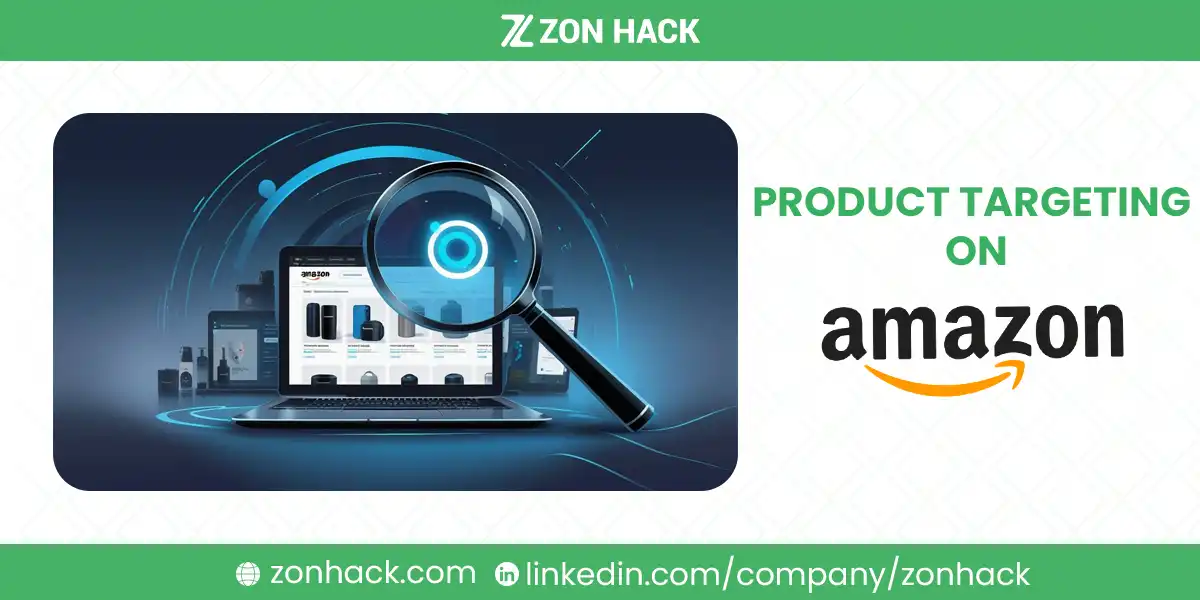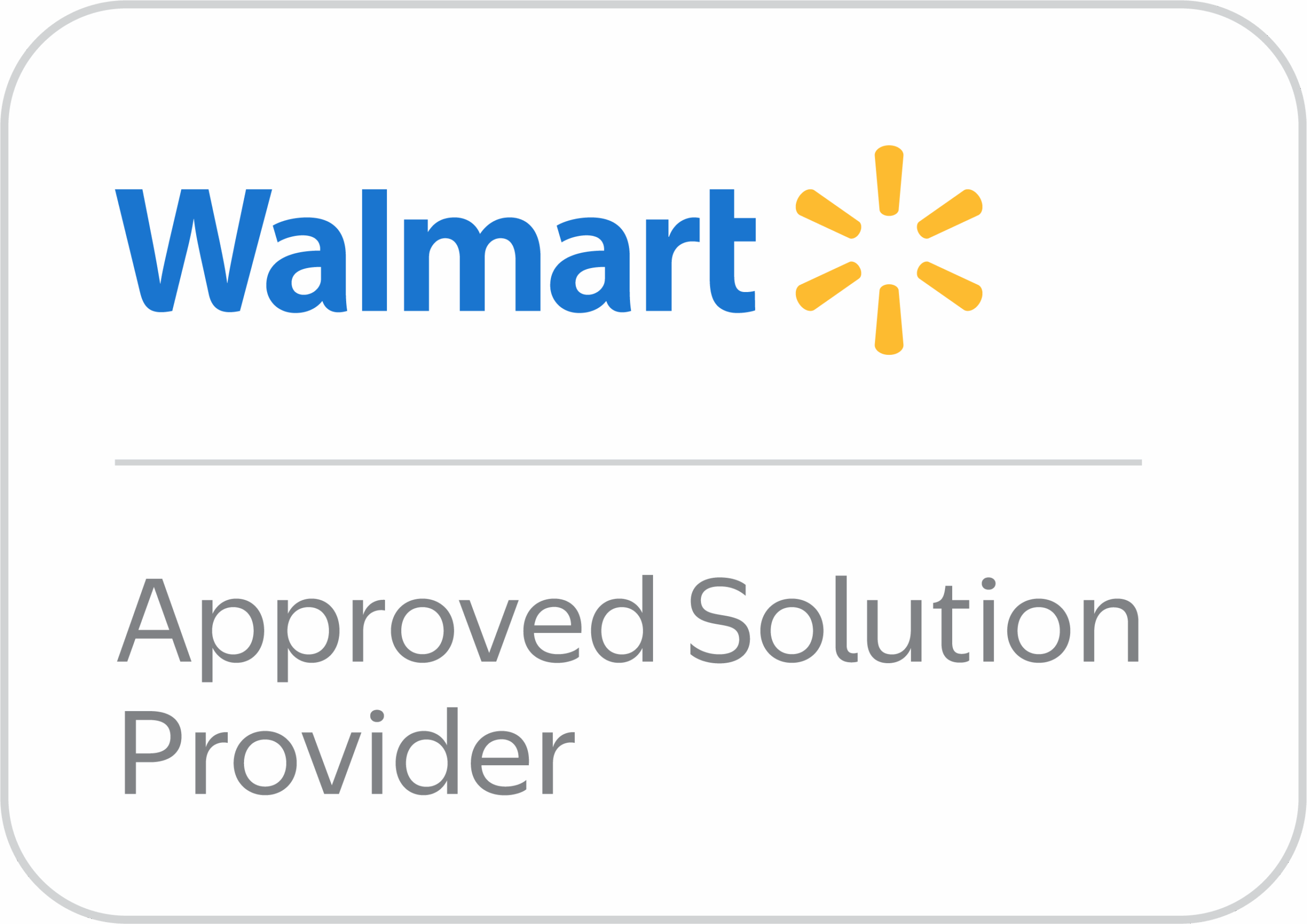When shoppers browse Amazon, they don’t always type keywords. They click through product listings, check reviews, compare features, and explore categories. That’s where Product Targeting steps in.
Unlike keyword targeting that aims at search terms, Product Targeting lets advertisers show their ads in the moment of decision — right on product detail pages, category listings, or even competitor product pages. It’s available through Sponsored Products and Sponsored Display campaigns.
You can target:
- Specific ASINs (Amazon Standard Identification Numbers)
- Entire categories or subcategories
- Refined attributes like brand, average star rating, shipping eligibility, or price range
Why does it matter? Because this strategy aligns ads with purchase-ready intent. Someone browsing a specific product is already halfway down the funnel. Product Targeting capitalizes on that momentum.
The benefits are clear:
- Higher conversion rates from laser-focused placements
- Lower wasted ad spend by skipping irrelevant clicks
- Defensive coverage on your own listings
- Aggressive conquesting of competitor real estate
- Cross-sell opportunities by targeting related products
For brands running Amazon ads, Product Targeting is no longer optional. It’s strategic. It brings control, granularity, and higher ROI compared to keyword-only campaigns.
Where Product Targeting Fits in the Amazon Ads Ecosystem
Amazon’s ad targeting options can be split into three main pillars:
- Automatic Targeting: Great for beginners or product discovery. Amazon controls placement based on its algorithm.
- Manual Keyword Targeting: Advertiser picks exact or broad match keywords. Useful for high-intent search placements.
- Manual Product Targeting: Focuses on placing ads on specific products, categories, or product attributes. That’s what we’re exploring here.
Under Sponsored Products, you can manually target both ASINs and categories. With Sponsored Display, you can go a step further by targeting audiences and retargeting users who viewed specific products.
Done right, Product Targeting complements keyword and auto campaigns — not replaces them.
Types of Product Targeting
1. Category Targeting
Category Targeting casts a wide net. You pick a relevant product category (e.g., *”Blenders””) and Amazon shows your ad across that entire section.
But it’s not just broad targeting. You can refine it by:
- Minimum star rating (e.g., 4+ stars only)
- Price range (e.g., $20–$50)
- Brand (include or exclude competitors)
- Shipping (e.g., Prime-eligible only)
Use case: Launching a new product and want maximum exposure within a specific niche? Start here.
It works especially well when:
- Your product is competitively priced
- You have strong reviews
- You’re trying to build awareness within a niche
It’s a volume play. Expect a lower CTR, but broader reach.
2. ASIN Targeting (Individual Product Targeting)
This is where the precision magic happens. Instead of targeting a whole category, you tell Amazon exactly which ASINs to show your ad on.
Think about that: you can advertise your product right on your competitor’s listing.
Why it matters:
- You’re reaching shoppers at peak decision-making moments
- You can piggyback on a competitor’s hard-earned traffic
- You can upsell accessories on your own listings
Examples:
- Selling a phone case? Target specific phone models.
- Launching a supplement? Target popular vitamin listings with weaker reviews.
Pro tip: Start by analyzing your Search Term Report from auto campaigns. Find ASINs that already generate clicks or conversions. Then manually target those for better control and bidding.
Advanced Product Targeting Strategies
1. Data-Driven Targeting
Running blind doesn’t work. Smart advertisers leverage Amazon’s data to zero in on what works.
- Use the Search Term Report from automatic campaigns. Look for ASINs with strong click-through and conversion performance.
- When setting up a new campaign, Amazon will suggest ASINs or categories. Don’t ignore these. They’re often based on buyer behavior.
- Benchmark conversion rate, CTR, and ACoS to identify high-potential targets.
Pro tip: Conquest products with a higher price and lower rating than yours. You instantly look like the better deal.
2. Competitive Targeting (a.k.a. Conquesting)
This is where you go on the offensive.
Let’s say you sell a $29.99 water bottle with a 4.6-star rating. Your biggest competitor sells a $34.99 version with 4.1 stars.
You can target their ASIN. Your ad shows on their page. You win the click.
Effective conquesting tactics:
- Target top 3 competitors in your category
- Focus on listings with poor visuals or fewer reviews
- Target multiple variations (sizes, colors) to increase visibility
It works because it inserts your product in front of a ready-to-buy shopper.
3. Complementary Product Targeting (Cross-Selling)
Product Targeting isn’t just for conquest. It’s great for upselling and cross-selling.
Imagine this:
- You sell coffee filters.
- You target popular coffee maker listings.
- Your ad appears right where the customer is most likely to buy both.
Or:
- You sell pet shampoo.
- You target grooming tools or brushes.
Cross-sell targeting helps increase average order value (AOV) and capture related interest. It also boosts brand presence across adjacent product spaces.
Best use cases:
- Accessories (chargers, cases, refills)
- Bundles
- Lifestyle pairings (outfits, kitchenware sets)
4. Brand Defense
Brand Defense is about protecting your own territory.
If you don’t target your own ASINs, someone else will.
Competitors can place ads on your listings and pull away buyers. To stop that, use Product Targeting to:
- Place ads on your own product pages
- Promote premium versions of your product
- Cross-sell different sizes, colors, or bundles
It’s a simple but often overlooked tactic. Defending your brand real estate is just as important as gaining new ground.
Negative Product Targeting: The Cleanup Crew
Not every ASIN deserves your ad spend. That’s where Negative Product Targeting comes in.
You can exclude specific ASINs or categories where your ad performs poorly. It helps prevent:
- High click volume but low conversion
- Irrelevant placements
- Wasted spend on mismatched audiences
Where to implement it:
- At the campaign or ad group level
- During setup or as a mid-campaign optimization
Pro Tip: Don’t rush to add negatives. Let an ASIN gather at least 20–30 clicks before evaluating.
Over time, negative targeting tightens your funnel and improves your ROAS. Just remember: it’s not permanent. Review negatives periodically and remove them if product context or performance shifts.
Setting Up and Managing Product Targeting Campaigns
Step-by-Step Campaign Setup
To launch a product targeting campaign on Amazon, follow these steps:
- Access Your Account: Log in to your Amazon Seller Central or Advertising Console.
- Navigate to Campaign Manager: Go to the Campaign Manager and click on “Create Campaign.”
- Select Campaign Type: Choose between Sponsored Products or Sponsored Display.
- Choose Targeting Type: Opt for Manual Targeting.
- Select Product Targeting: Under targeting options, pick Product Targeting.
- Define Targets: Choose specific ASINs or categories to target. You can refine your selection based on factors like star rating, price range, brand, and shipping eligibility.
- Set Budget and Bids: Determine your daily budget and set bids for your targets.
- Launch Campaign: Review your settings and launch the campaign.
Structuring Campaigns for Performance
Organizing your campaigns effectively can lead to better performance and easier management:
- Separate Campaigns by Strategy: Create distinct campaigns for different targeting strategies, such as competitor targeting, complementary product targeting, and brand defense.
- Group Similar Products: Within each campaign, group similar products together to maintain consistent messaging and bidding strategies.
- Avoid Mixing Targets: Do not mix category and ASIN targets within the same ad group to maintain clarity in performance analysis.
- Use Clear Naming Conventions: Adopt a naming structure that reflects the campaign’s purpose, such as:
- SP – Competitor Targeting – Headphones
- SP – Complementary Targeting – Kitchen Appliances
- SP – Competitor Targeting – Headphones
Defining Campaign Goals
Before launching a campaign, clearly define its objectives:
- Product Launch: Increase visibility and awareness for new products.
- Sales Boost: Drive higher sales volume for existing products.
- Inventory Clearance: Promote products that need to be sold quickly.
- Brand Protection: Defend your product listings from competitor ads.
- Cross-Selling: Encourage the purchase of complementary products.
- Profit Optimization: Focus on achieving a higher return on ad spend (ROAS).
Your campaign goals will influence your targeting choices, budget allocation, and performance metrics.
Bidding and Budgeting
Effective bidding and budgeting strategies are crucial for campaign success:
- Set Realistic Budgets: Determine daily budgets based on your product margins and sales goals.
- Choose Bidding Strategy: Amazon offers dynamic bidding options:
- Dynamic Bids – Down Only: Amazon lowers your bids in real-time when your ad may be less likely to convert.
- Dynamic Bids – Up and Down: Amazon raises or lowers your bids in real-time based on the likelihood of conversion.
- Fixed Bids: Amazon uses your exact bid and does not adjust it.
- Dynamic Bids – Down Only: Amazon lowers your bids in real-time when your ad may be less likely to convert.
- Monitor ACoS: Keep an eye on your Advertising Cost of Sales (ACoS) to ensure profitability.
- Consider Lifetime Value: For acquisition campaigns, consider the lifetime value of a customer when setting higher bids.
Measuring Success and Optimizing Campaigns
Key Metrics to Monitor
Regularly track these metrics to assess campaign performance:
- ACoS (Advertising Cost of Sales): The ratio of ad spend to sales revenue.
- ROAS (Return on Ad Spend): Revenue generated for every dollar spent on advertising.
- CTR (Click-Through Rate): The percentage of ad impressions that result in clicks.
- CVR (Conversion Rate): The percentage of clicks that result in sales.
- Impressions and Spend per ASIN: Helps identify which products are gaining visibility and consuming budget.
- Organic Ranking Impact: Assess how ads influence your product’s organic search ranking.
Optimization Tips
Implement these strategies to enhance campaign effectiveness:
- Isolate High Performers: Move well-performing ASINs into dedicated campaigns for focused optimization.
- Pause Underperformers: Identify and pause ASINs or categories that are not delivering desired results.
- Adjust Bids: Increase bids for high-converting targets and decrease for low performers.
- Refresh Creatives: Update product images and A+ content to improve engagement.
Tools & Reports to Use
Leverage Amazon’s tools and reports for data-driven decisions:
- Search Term Report: Identify which search terms are driving traffic and conversions.
- ASIN-Level Placement Reports: Understand where your ads are appearing and their performance.
- Category Benchmarking Tools: Compare your performance against category averages.
- Sponsored Ads Report Console: Access detailed reports on campaign performance.
- Amazon Attribution: Measure the impact of non-Amazon marketing efforts on Amazon sales.
Final Thoughts
Product Targeting on Amazon is a powerful tool that, when used strategically, can significantly enhance your advertising efforts. By aligning your ads with shopper intent, you can achieve higher conversion rates, better ROI, and a stronger market presence. Whether you’re aiming to outmaneuver competitors, cross-sell products, or defend your brand, mastering product targeting is essential for success in the Amazon marketplace.
FAQs
How do I identify which ASINs to target?
Analyze your automatic campaign’s Search Term Report to find ASINs that are driving conversions. Additionally, consider targeting competitor products with lower ratings or higher prices to position your product as a better alternative.
What is the difference between Sponsored Products and Sponsored Display?
Sponsored Products ads appear within Amazon’s search results and product detail pages, focusing on keyword and product targeting. Sponsored Display ads can appear both on and off Amazon, targeting audiences based on shopping behaviors and interests.Adbrew
How often should I review and adjust my campaigns?
Regularly monitor your campaigns, ideally on a weekly basis, to assess performance metrics and make necessary adjustments to bids, budgets, and targeting.
Can I use both ASIN and category targeting in the same campaign?
While it’s possible, it’s recommended to separate them into different ad groups or campaigns for clearer performance analysis and optimization.
How does negative product targeting benefit my campaigns?
Negative product targeting allows you to exclude specific ASINs or categories that are not performing well, thereby focusing your budget on high-performing targets and improving overall campaign efficiency.




